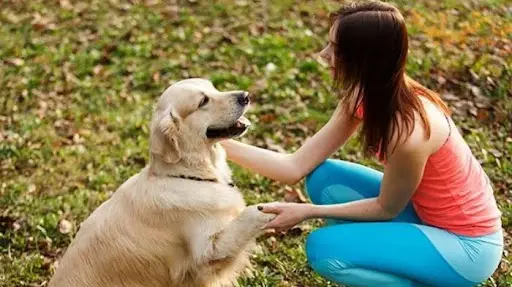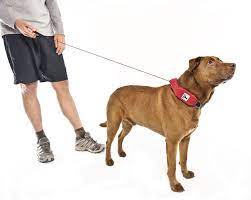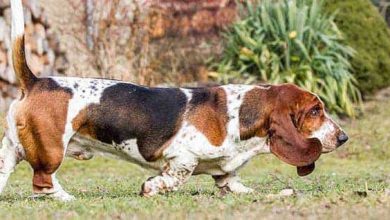How to Train Your Dog to Be a Good Citizen and a Great Companion?


Having a polite and well-socialised dog that can happily accompany you anywhere is a wonderful thing. With consistent training, you can shape your pup into a model canine citizen who brings joy wherever they go. This article provides a complete guide to teaching your dog the good manners and impulse control needed to thrive in any situation.
What is a Good Citizen Dog?
A “good citizen” dog is one who is well-behaved, socially adaptable, and comfortable in public settings. These dogs have been extensively trained and socialised to follow basic obedience cues, resist impulses, and interact politely with people, other pets, and stimuli. Some key traits of a good canine citizen include:
- Has good leash manners and loose leash walking skills
- Knows cues like sit, stay, down, come, leave it
- Doesn’t jump up on people or mouth hands
- Settles down calmly in public spaces
- Tolerates handling, grooming, and vet visits
- Gets along with other animals when properly introduced
- Doesn’t react to crowds, noises, or distractions
- Obeys commands immediately even when distracted
- Respect boundaries and avoid nuisance behaviours like Begging, barking or stealing food.
Dogs able to focus on their owners, control impulses, and behave appropriately in any situation earn the “good citizen” title and make wonderful active companions you can take anywhere with pride. The best dog muzzles UK sellers offer allow dogs to achieve this.
How to Train Your Dog to Be a Good Citizen?
Raising your dog to be a canine good citizen requires dedication and consistency with the following areas of training:
1. Teach Fundamental Obedience Cues
Core obedience cues like sit, stay, down, come, and leave must be thoroughly mastered using positive reinforcement training methods in different environments. Frequent short daily training sessions with high-value rewards strengthen these essential skills.
2. Practice Impulse Control Exercises
Dogs need to learn to control their impulses around tempting things like food, other dogs, cats, joggers etc. Impulse control stops your dog from breaking stays, pulling on leash or reacting to distractions. Reward calm, focused behaviour around triggers.
3. Socialise Extensively
Safely expose your dog to a wide range of sights, sounds, people, animals, places, surfaces and experiences starting from puppyhood. This prevents fearfulness and reactivity later on. Always make new exposures fun and rewarding.
4. Discourage Unwanted Behaviours
Be vigilant about curbing unacceptable behaviours like jumping up, nipping, counter surfing, or leash pulling. Avoid inadvertently reinforcing bad habits – redirect to better alternatives instead.
5. Train of Polite Public Manners
Proof your dog’s obedience in real-life settings like outdoor malls, shops, cafes, transport, and crowds. Practice settling down on cue. Keep the focus on yourself despite distractions through rewards.
With extensive real-world training and socialisation to build confidence and skills, you can raise a happy, adaptable dog ready to be the perfect ambassador.
How to Test Your Dog’s Good Citizenship?
To evaluate your dog’s progress in good citizenship, you can have them take an American Kennel Club Canine Good Citizen (CGC) test or a similar temperament test. Some elements of the CGC test include:
Accepting Friendly Strangers
Remaining polite and allowing petting from an unfamiliar person without shyness or jumping up.
Sitting Politely for Petting
Staying calmly seated next to a stranger accepting petting rather than nipping, barking, or moving away.
Grooming Inspection
Tolerating inspection and handling of ears, feet and brushing without reacting or pulling away.
Walking on a Loose Leash
Responding readily to leash prompts and walking without pulling. Do not lunge or forge ahead.
Walking Through a Crowd
Walking calmly through a busy crowd as directed without stress or aggression.
Sit/Stay with Distractions
Maintaining sit and stay cues with the owner walking away and dropping items despite distractions.
Coming When Called
Promptly responding to come command when called from across the room – does not run off or get distracted.
Reaction to Surprising Situations
Remaining composed when exposed to stimuli like doors opening, crutches, wheelchairs, loud noises, or joggers running by.
To pass the CGC test, dogs must display good manners and obedience in these varied real-life scenarios. Preparing your dog to pass such standardised temperament tests validates your training efforts in creating a polite companion.
Benefits of a Trained, Good Citizen Dog
Owning a “canine good citizen” certified dog offers many benefits:
Enjoy More Public Access
Dog-friendly shops, transport, parks, and cities grant access more willingly to polite, trained dogs who are not a nuisance. It expands places you can bring your dog.
Increased Housing Options
Many apartments, condos, and rentals only accept well-behaved dogs with training credentials, as they pose less risk of problems.
Improved Social Skills
Extensive socialisation makes your dog more comfortable in groups, tolerant of handling, and friendly towards new people and animals.
Better Bonding
The mutual respect, communication, and positivity built during training strengthens the bond between dog and owner into an amazing team.
Better Public Perception
A well-trained dog improves public opinion about dogs in general by being an excellent breed ambassador in public settings.
The investment of time into training creates a fantastic companion that you can confidently take on adventures, knowing they will be on their best behaviour.
Step-by-Step Training Methods
Here are some step-by-step tips on how to teach foundational good citizen behaviours to your dog using rewards-based training:
Loose Leash Walking
- Use front-clip harnesses that turn the dog towards you if pulling.
- Stop walking whenever the leash gets tight; reward for slack leash.
- Change direction frequently so the dog has to pay attention.
- Use treats to keep the dog focused near your side.
Sit Politely to Say Hello
- With the dog on a leash, have strangers approach and ask for a seat before petting.
- If they jump up, stand still and fold arms, ignoring them until they sit. Then praise and reward.
- Practise this at home first, then in busy areas.
Settled Down Behaviour
- Teach dogs to go to their mat or bed spot and reward staying there with treats and praise.
- Gradually increase the duration of time you expect dogs to remain settled on their spot.
- Practice in distracted environments like cafes, pet stores, outdoor malls.
Come When Called
- Say the dog’s name + “Come!” in a happy tone then run backwards encouraging them to you.
- Reward with treats and praise when they come.
- Increase distance and add distractions like toys and people over many repetitions.
Polite Greeting at Door
- When arriving home, wait until your dog sits calmly before opening the door and letting them outside.
- If they jump or bark, wait for a pause in the behaviour before rewarding with attention.
- With practice, they learn that sitting politely gets the door opened.
Applied consistently over time, these positive training techniques develop good canine citizens ready to thrive in society!
Common Behavior Problems
Despite your best efforts, some problematic behaviours may still pop-up. Here are tips on resolving frequent issues:
Excessive Barking
- Do not reward barking with any attention. Wait for pauses in barking then reward quiet behaviour.
- Block access/visibility to barking triggers if possible. Teach a quiet cue.
- Provide adequate exercise, enrichment and training to prevent boredom induced barking.
Jumping On Guests
- Keep dogs leashed, have them sit and reward calm behaviour during home greetings.
- Turn your back if they jump, folding arms and ignoring until four paws are on the floor. Then praise.
- Ask visitors to also avoid eye contact and touch until the dog settles.
Digging/Destruction
- Ensure your dog gets adequate physical and mental exercise to prevent boredom based repetitive behaviours.
- Provide appropriate outlets – digging pits, chewing toys.
- Use deterrents – scat mats, distraction, remote correction for undesired areas
Stealing Food/Begging
- Never feed from the table. Remove access to all human food when eating.
- Work on a solid “Leave it!” cue.
- Teach your dog to settle on a mat with a chew toy as an alternative behavior while you eat
Targeting the root cause of issues, being proactive with training, and preventing rehearsal of problems allows you to shape your dog into the ideal companion over time.
Conclusion
Training your dog to be a well-mannered canine citizen requires dedication but pays huge dividends in having an amazing companion. Start early with socialisation and positive reinforcement training to teach core behaviours like loose leash walking, impulse control, and following commands in distracting environments.
Discourage unwanted habits promptly and channel your dog’s energy into appropriate alternatives. Seek professional guidance if needed for resolving more stubborn issues. With consistent effort and patience, you can mould your furry friend into the perfect ambassador who brings joy wherever they go. Investing in training creates a phenomenal lifelong companion.




